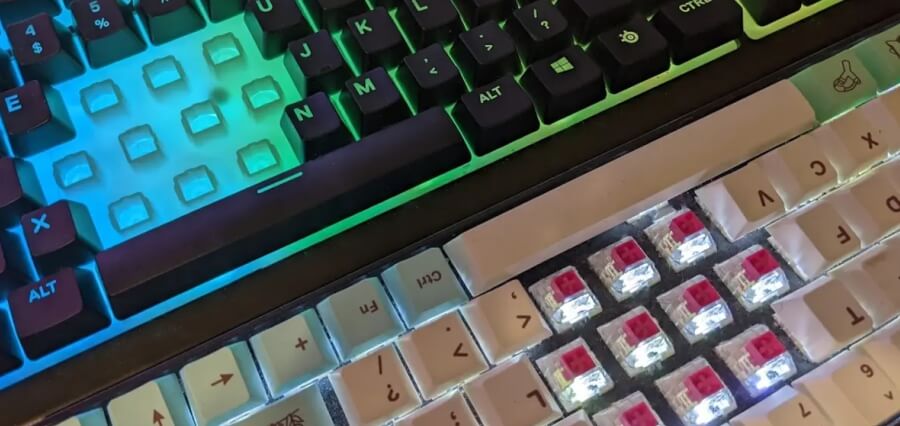Recognizing the Capability of Membrane Layer Switches Over for Interface Devices
The capability of membrane layer switches over stands for a substantial advancement in interface layout, combining performance with visual flexibility. These buttons operate via a multi-layered structure that converts individual communications into electric signals, permitting both small formats and durability against environmental aspects. As industries increasingly focus on individual experience, understanding the nuances of membrane layer switch technology comes to be essential. What ramifications do these innovations hold for future applications, and how might they redefine customer communications throughout various tools?
What Are Membrane Buttons?
Membrane layer switches are ingenious interface gadgets that assist in individual communication with electronic devices. These flexible elements include several layers, including a graphic overlay, spacer, and a published circuit layer. The design enables a seamless combination right into different electronic devices, boosting both the visual and functional elements of individual interfaces.
Membrane layer switches are commonly utilized in a variety of applications, from home devices to commercial machinery and medical tools. Their building and construction usually features a thin account, making them an optimal selection for portable layouts. The responsive comments supplied by these buttons can be engineered to satisfy certain customer choices, guaranteeing reliable interaction between the user and the tool.
Sturdiness is another significant advantage of membrane buttons, as they are resistant to dust, moisture, and chemicals, which improves their lifespan sought after settings. Furthermore, these switches can be customized in terms of form, dimension, and graphic style, permitting branding and user-specific functions. In general, membrane switches over stand for a functional remedy for improving individual experience in electronic tools, combining functionality with visual allure in an efficient fashion.
Just How Membrane Changes Work
Operating on an uncomplicated concept, membrane layer changes make use of a split building to sign up customer input properly. Each button is composed of numerous layers, including a published circuit layer, a spacer layer, and a leading graphic layer, which are made to interact effortlessly. When a customer presses the leading layer, it compresses the spacer layer, bringing the conductive elements of the circuit layer right into contact with each various other.
This get in touch with creates a closed circuit, signaling the device to implement a details feature. The layout allows for different setups, including responsive feedback, which can improve the individual experience by giving a physical sensation upon activation. The materials utilized in membrane switches frequently include adaptable substratums, such as polyester or polycarbonate, which make sure longevity and resilience against wear and tear.

Key Advantages of Membrane Layer Switches

An additional significant benefit is their compactness. Membrane switches are slim and light-weight, which enables makers to save room in their devices without sacrificing functionality. This attribute is specifically helpful in applications where weight and quantity are vital factors to consider.
In addition, membrane buttons are resistant to dirt, wetness, and chemicals, enhancing their durability. This resilience expands their life expectancy and decreases the demand for regular substitutes, leading to expense financial additional resources savings with time.
Additionally, the responsive feedback given by membrane buttons can be enhanced to boost customer communication. They can consist of attributes such as increased switches or distinct clicks, boosting functionality and customer experience.
Applications Across Industries
Individual user interface tools making use of membrane layer buttons are widespread in a large range of sectors, showcasing their versatility and performance. Membrane Switch. In the medical market, membrane layer buttons are indispensable to devices such as diagnostic devices and client tracking systems, where their durability and ease of cleaning are vital for maintaining health requirements. In the automotive sector, these switches are employed in dashboard controls and infomercial systems, providing a smooth and modern-day user interface for individuals.
In addition, the customer electronic devices sector take advantage of membrane layer switches in home appliances and handheld tools, where small layout and straightforward user interfaces enhance customer experience. Industrial applications also leverage membrane layer switches for control panels in equipment and automation systems, stressing their robustness and resistance to extreme atmospheres.
In the aerospace and protection sectors, membrane layer buttons are used in cockpit controls and tools, where reliability and efficiency under extreme problems are vital. Furthermore, the gaming market progressively integrates membrane layer switches in controllers and gallery makers, adding to an engaging individual experience. Overall, the adaptability of membrane changes allows their extensive usage across many fields, underscoring their importance in contemporary interface style.
Future Patterns in Membrane Layer Change Innovation

In addition, using sophisticated materials, such as polycarbonate and polyester movies, is expected to climb, offering enhanced toughness and resistance to ecological stressors. These products add to the general longevity of membrane switches, making them appropriate for harsher commercial applications.
Furthermore, the Check This Out unification of wise innovation, including IoT connection, will enable membrane layer buttons to communicate with various other gadgets and systems, assisting in a much more interactive customer experience. This pattern aligns with the growing demand for smart tools across numerous markets, from healthcare to consumer electronics.
Last but not least, customization choices are expected to expand, enabling producers to produce bespoke services tailored to specific customer demands and choices. These developments will certainly place membrane buttons as essential elements in the advancement of customer interface modern technology.
Final Thought
In conclusion, membrane layer switches over stand for a crucial advancement in individual interface innovation, offering a reliable and versatile option for diverse digital applications. As advancements in material science you could try these out and touch sensing technologies proceed, the capability and applicability of membrane layer switches are anticipated to broaden, reinforcing their relevance in modern-day digital tools.